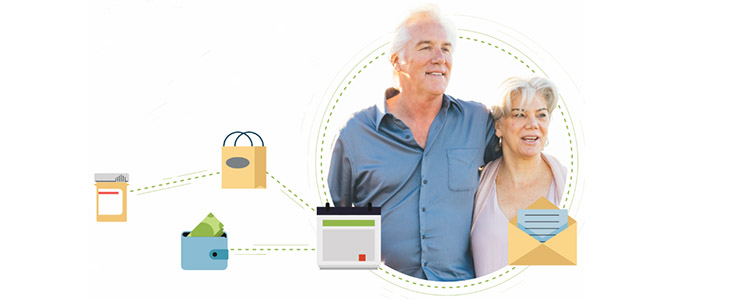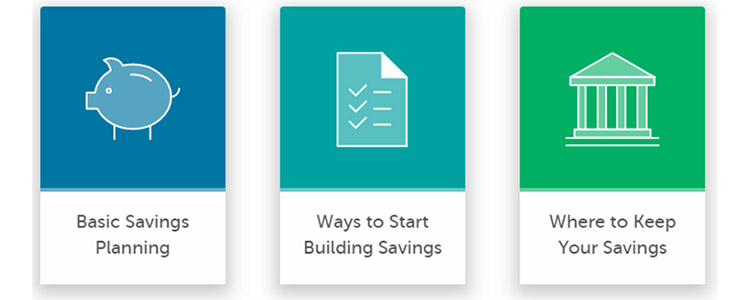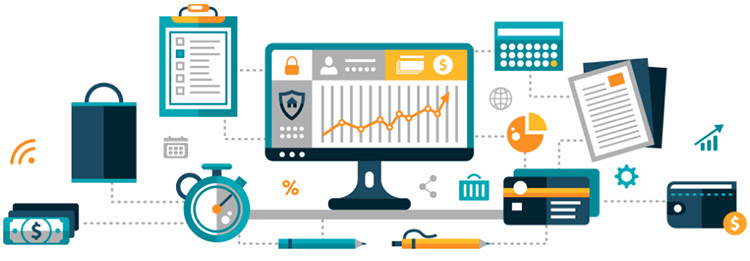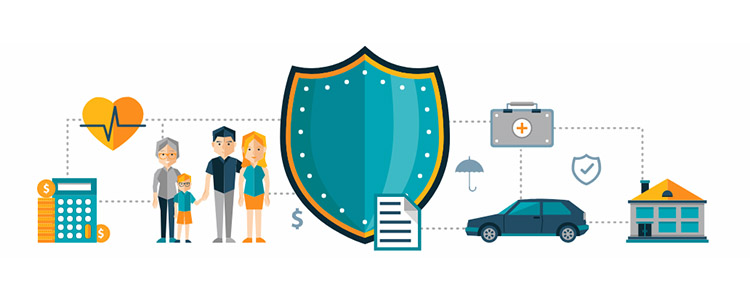Find consumer tips on everything from credit to home safety to travelling on a budget and so much more!
Planning for a Caregiver
While a sensitive topic, planning allows everyone involved to define the caregiving arrangement that works best for them, helping to reduce any undue stress or burden. Whether it’s you or a loved one planning for a caregiver, it’s helpful to understand different types of caregiving relationships, what caregivers can do, when one might be needed, and how to choose a caregiver.
Ready to Learn More?
Watch our Planning for a Caregiver module. It's quick and easy. Simply click the yellow button at the bottom of this page. The module will start playing as soon as you arrive on the site. Once you've listened to the introduction, click the arrow to the right of the screen to move through the three different topics:
- What is a caregiver?
- When will you need one?
- What are the characteristics of an ideal caregiver?
Tips
Once you've started the module, you can see captions, adjust volume and pause the module by using the controls at the top right of the screen. You can also select the transcript button to see all of the content from the module.


According to a recent poll, nearly one in six Americans act as a caregiver for an older family member or loved one. Caregivers provide crucial support in important areas of daily life to individuals who are impaired or aging. Planning for future care is important and necessary.
Building Emergency Savings
There are several small things you can do every day, and lots of available resources that can help you build savings without feeling like you’re missing out on life. This module will look at practical ways to help you start saving or build on steps you already take to make your money go further. With some thought and planning, building savings can be less intimidating than it seems.
Ready to Learn More?
Watch our Building Emergency Savings module. It's quick and easy. Simply click the yellow button at the bottom of this page. The module will start playing as soon as you arrive on the site. Once you've listened to the introduction, click the arrow to the right of the screen to move through the three different topics:
- Basic Savings Planning
- Ways to Start Building Savings
- Where to Keep Your Savings
Tips
Once you've started the module, you can see captions, adjust volume and pause the module by using the controls at the top right of the screen. You can also select the transcript button to see all of the content from the module.

Everyone already knows it’s important to save money; but if you’re like most people, that’s easier said than done. But saving money doesn’t have to feel like a sacrifice, and you are not alone!
Learn More About Credit Scores and Reports
Your credit score can have one of the biggest impacts on your financial life. Your credit history may be viewed by banks, cell phone companies, credit card companies and even potential employers, so understanding how it works will help you maintain healthy finances.
Ready to Learn More?
Watch our Credit Scores and Reports module. It's quick and easy. Simply click the yellow button at the bottom of this page. The module will start playing as soon as you arrive on the site. Once you've listened to the introduction, click the arrow to the right of the screen to move through the three different topics:
- What is a credit score?
- How is your credit score calculated?
- How can you help protect your credit score?
Tips
Once you've started the module, you can see captions, adjust volume and pause the module by using the controls at the top right of the screen. You can also select the transcript button to see all of the content from the module.

Credit scores and reports can be confusing and difficult to understand. We've partnered with Everfi, Inc. to help simplify this information for you!
Life Insurance Planning Calculator
Use this Life Insurance Calculator to help estimate your current expenses and debt and how they could impact end-of-life expenses.
Ready to Get Started?
Using the Life Insurance Planning Calculator is quick and easy. Simply click the yellow button below. The calculator will have places for you to include your current mortgage, education and other expenses and will project your life insurance needs.

Union Plus Life Insurance is underwritten by Hartford Life and Accident Insurance Company, Hartford, CT 06155. All benefits are subject to the terms and conditions of the policy. Policies underwritten by Hartford Life and Accident Insurance Company detail exclusions, limitations, reduction of benefits and terms under which the policies may be continued in force or discontinued. Life Form Series includes GBD-1000, GDB-1100 or state equivalent.

Do you have enough life insurance? Explore whether your life insurance coverage is sufficient to cover your dependents’ expenses in the future.
Insurance 101
Insurance is not a "set it and forget it" decision — you’ll want to re-evaluate your needs on a regular basis or at major life events such as a new job, moving to a new area, or birth of a child. This module will explore different types of policies, how insurance works, and how it affects your money to help make sure you have the plan that works best for you.
Ready to Learn More?
Watch our Insurance module. It's quick and easy. Simply click the yellow button at the bottom of this page. The module will start playing as soon as you arrive on the site. Once you've listened to the introduction, click the arrow to the right of the screen to move through the three different topics:
- Types of policies
- Common costs
- Processing claims
Tips
Once you've started the module, you can see captions, adjust volume and pause the module by using the controls at the top right of the screen. You can also select the transcript button to see all of the content from the module.

Union Plus Life Insurance is underwritten by Hartford Life and Accident Insurance Company, Hartford, CT 06155. All benefits are subject to the terms and conditions of the policy. Policies underwritten by Hartford Life and Accident Insurance Company detail exclusions, limitations, reduction of benefits and terms under which the policies may be continued in force or discontinued. Life Form Series includes GBD-1000, GDB-1100 or state equivalent.

Insurance can help protect you, your loved ones, and your property from unexpected financial risk or loss, and is a key part of any financial plan.
Understanding Auto Loans
When purchasing your next car, it's important to understand the entire cost and duration of your loan and to get all the facts, upfront, so you can make the decision that best fits your life.
Ready to Learn More?
Watch our Understanding Auto Loans module. It's quick and easy. Simply click the yellow button at the bottom of this page. You'll then see the "Understanding Auto Loans" page. To start watching, simply click the orange "play" button. This video will include helpful information about auto loans, such as:
- How are auto loans financed?
- How long are the terms of the loans?
- What's the difference between a fixed rate loan and a variable interest rate?
Tips
Once you've started the module, you can see captions, adjust volume and pause the module by using the controls at the top right of the screen. You can also select the transcript button to see all of the content from the module.


So, you’re ready to buy a new car. But, you have to figure out the best loan for your needs. Don't worry, we've partnered with Everfi, Inc. to help you understand the process!
Don’t Let Vet Bills Haunt Your Halloween
Including pets in holiday festivities is becoming the norm as pet ownership rises, and Halloween is no exception. But beware of potential hazards this time of year may bring such as Halloween candy and costumes as they present opportunities for pets to enjoy non-traditional “treats” that could lead to unexpected vet bills.
Over the last three years, claims for pets ingesting toxic foods or foreign objects consistently ranked among the top 10 accident claims during the month of October. Accident claims due to toxic foods or foreign object ingestion increased 5% in October 2017 compared to the prior year, representing 19% of all accident claims during the month*.
Help reduce your pet’s risk by taking proper precautions this Halloween season:
- Keep Halloween treats away from pets. While chocolate is one of the most toxic to dogs and cats, candy containing xylitol, grapes, and raisins should also be kept out of reach. Make sure wrappers find their way into the trash, as these also present a risk to pets if ingested.
- If dressing your pet up in a Halloween costume this year, be sure to inspect the costume for any small or loose pieces that might be easily chewed off and swallowed. Beware of these hazards on human costumes as well.
- Keep seasonal Halloween décor, like lights and candles, in out of reach areas for pets. Pets may want to play or chew on smaller objects or loose items, resulting in a potential choking hazard.
If you know or suspect your pet has ingested a toxic food or foreign object, it is important to seek veterinary care as soon as possible. Unexpected veterinary costs can be scary but having pet insurance can help take the fright out of those expensive veterinary bills.
Accident plans are only $6/month for cats and $9/month for dogs (pricing varies in Washington). If you’d like to include illness coverage, there are comprehensive BestBenefit Accident and Illness plans available.
Learn more about
Union Plus Pet Insurance

*Based on Pets Best claims data from 2015, 2016, and 2017
Pet insurance offered and administered by Pets Best Insurance Services, LLC is underwritten by American Pet Insurance Company (APIC) or Independence American Insurance Company (IAIC). Please visit www.americanpetinsurance.com to review all available pet health insurance products underwritten by APIC.”

Halloween is fun for pets too, take these precautions to keep your pet healthy and safe this year. Union Plus Pet Health Insurance reimburses cat and dog owners for veterinary expenses when their pets get injured.
Buyer Beware: How to Avoid Buying a Flood Damaged Vehicle
With around 5 million vehicles in the wake of Florence, flood damaged vehicles could run in the thousands. “While, hopefully, these vehicles will have their titles marked flood damaged and go to salvage yards, many will likely re-enter the market as used cars,” said Jack Gillis, the Consumer Federation of America’s Executive Director and author of The Car Book. “Because of the computerization, electronics and sophisticated safety technology in today’s vehicles, it’s critical that you avoid getting stuck with one of these lemons.”
“Looks can be deceiving—with a nice clean up, these water infested vehicles, may actually look pretty good—which means knowing how to identify a flooded vehicle is critical. When it comes to buying a car, three out of four of us buy used. So there’s a big incentive for disreputable sellers to move flood damaged vehicles north hoping to sell them to unsuspecting buyers,” said Gillis. “While luckily less cars have been flooded compared to Harvey and Irma, flooded cars remain a significant risk to unsuspecting consumers. By following these tips, consumers can protect themselves from purchasing a vehicle which can put themselves and their families at risk,” Gillis continued.
Ten Tips for Avoiding a Flood Damaged Vehicle
- Check the VIN (Vehicle Identification Number) which is located on the driver’s side dashboard, visible through the windshield, with the National Motor Vehicle Title Information System established by the U.S. Department of Justice. You’ll have to pay a small fee for the information, but it’s the most comprehensive data base. You can also check with the National Insurance Crime Bureau (NICB) or CarFax (both currently offering free flood history information). Even if the database has no flood information, beware, as fraudsters have ways of getting around VIN registration information or it simply wasn’t reported.
- Use your nose. Beware if the vehicle smells musty or damp or if you smell some kind of air freshener. Close up the windows and run the air conditioner and check for a moldy smell.
- Look for dirt, mud and water stains. Check the carpets, seat upholstery, cloth lining inside the roof, if you see any dirt or mud stains, beware. Feel under the dashboard for dirt or moisture and look in the glove boxes, ashtray, and various other compartments for moisture or stains. If you see straight stain line either on the inside of the door panel, engine compartment or trunk—watch out, that’s probably how high the water went in the vehicle. Tip: If the carpeting, seat coverings or headliner seem too new for the vehicle, that’s a sign that they may have been replaced due to flood damage.
- Listen for crunch. Pull the seats forward and back and try all of the safety belts. If you’re looking at an SUV with folding seats, try folding them all. Listen for the ‘crunchy’ sound of sand or dirt in the mechanisms or less than smooth operation.
- Check the spare tire (or inflator) area. Look for mud, sand or stains on the spare tire and jack equipment and the well under the spare tire. Check under the trunk carpet for a rigid board and look to see if it is stained or has water damage.
- Power up. Be sure to try all the power options including windows, locks, seats, moon roof, automatic doors, wipers, window washers, lights, AC system, etc. If any don’t work, sound funny, or operate erratically, beware. And don’t forget the sound system. Try out the radio, CD player and Bluetooth connectivity. Adjust the speakers front and back and side to side to listen for any crackling or speaker failure.
- Check for rust or corrosion. Look around the doors, in the wheel wells, under the seats, under the hood and trunk and inside the engine compartment.
- Look under the hood. Look at the air filter. It’s often easy to check and will show signs of water damage. Check the oil and transmission fluid. If it looks milky or has beads of water, watch out.
- Take a test drive and listen for unusual engine or transmission sounds or erratic shifting and acceleration. Set the cruise control to see if it is working properly.
- Check out the head and tail lights; look closely to see if there is any water or fogging inside. Same with the dashboard—are any of the gauges foggy or containing moisture droplets.
Contact: Jack Gillis, 202-939-1018
Union members buying a preowned vehicle are eligible for a free CarFax Reports on most vehicles.


With Florence flooding thousands of vehicles, there’s a good chance unscrupulous sellers will try and sell these potentially dangerous vehicles.
Debunking Common FICO Myths and Misconceptions
We’re here to turn that around.
The Most Common Myths About FICO Scores, Debunked:
- You Have Only One FICO Score
It turns out that you actually may have dozens of FICO Scores. The same goes for the VantageScore®, or any score for that matter, explains credit card expert John Ulzheimer, formerly of FICO and Equifax.
“The FICO is a brand, not a specific score,” says Ulzheimer. “And there are many different scores. Afterall, there are three credit bureaus and several generations of FICO's scoring software still in use today.”
These different scores may be used for different purposes. For instance, there are versions used for when you apply for an auto loan (i.e., FICO Auto Score 8), in credit card decisioning (i.e., FICO Bankcard Score 8), and for mortgage lending (i.e., FICO Score 2).
Ulzheimer further explains: “So when someone says, ‘My FICO Score is 700,’ that’s only as accurate as saying, ‘One of my FICO scores is 700 as of right now.’ “
- A Credit Score Is Part of Your Credit Report
When you order a credit report, your score isn’t actually an official part of the report. That’s why you’re not entitled to annual free credit scores like you are with credit reports, which you can get one for free from each of the three credit bureaus within a 12-month period, explains Ulzheimer.
“Credit scores, regardless whether it’s the FICO or VantageScore, are an add-on product sold along with a credit report,” says Ulzheimer. “Think about leather interior or heated seats as an upgrade to a car.” That’s why oftentimes there’s a fee you have to pay to get your credit score.
While there is typically a fee, these days many credit card companies and credit monitoring services offer a “free credit score.” Even though they are promoted as being free to you, the consumer, the company offering the free score is paying for them in some form, explains Ulzheimer.
- FICO Scores Are Used to Determine Premiums on Insurance
While credit scores can determine your terms and rates on car loans, mortgages, credit cards, and the so forth, they aren’t a factor in setting the premium on homeowners insurance and auto insurance. “Many insurance providers do leverage credit information in the decision process in granting insurance, but not FICO scores, which are designed to predict credit risk, not insurance risk,” says Tommy Lee, principal scientist at FICO.
Instead of using credit scores, lenders oftentimes look at credit-based insurance scores to assess how likely someone will have an insurance loss. That’s because research reveals a correlation between credit-based insurance scores and losses.
- FICO Scores Are Used During the Employment Screening Process
Here’s the difference: Credit reports can be used during the employment screening process when you apply for a job, but the credit scores themselves are not included on those types of reports, explains Ulzheimer.
“This is a hard one to kill,” says Ulzheimer. “So many people use the terms ‘credit score’ and ‘credit report’ interchangeably, which is why the myth persists.” Remember: a credit report is record of your credit history, whereas a credit score is an algorithm used to determine your credit risk and creditworthiness.
- Your FICO Score Factors in Your Income
Another common misconception is that the FICO® Score considers your income. The truth is that verified income is not found in the credit report, explains Lee. The same goes for the balances in your checking and savings accounts, and other assets, such as how much you have sitting in your retirement nest egg.
If you’re confused as on what the score is based on, look no further than your credit report. So think revolving loans, such as credit cards, and installment loans, such as car loans, mortgages, and personal loans.
- Married Couples Share a FICO Score
Married couples do not share credit scores or credit history. “Each partner has their own distinct credit report,” says Lee. “The only credit obligations that show on your report are those you signed up for, including those you had before you got married.”
However, if you add your spouse an as authorized user on your credit cards, while they aren’t responsible for making payments, the account will most likely will show up on their credit report. So if you’re making on-time payments, it could help build their credit score. Conversely, if you’re late, it could ding their credit.
- You Have to Carry a Balance on Your Credit Cards to Build a Credit History
Carrying a balance on your credit card — and not paying off your balances in full each month — to build your credit history is simply false, explains Lee.
“Carrying balances from month to month and incurring interest fees does not help your score,” says Lee. “ Instead, what matters is that you are keeping the balances reported in your credit file—typically your credit card statement balances—relatively low, especially in comparison to your credit limits.”
So how can you build your credit history and boost your score? As your payment history makes up 35 percent of your credit score, be careful not to make any late or missed payments. You’ll also want to keep your debt-to-limit, or credit utilization ratio, low. That’s because the second most important category in the FICO® Score calculation is your “amounts owed,” which makes up some 30 percent of the score calculation. You can use the FICO Score Planner to learn tips and tricks to reach your target score. You can also work with a nonprofit credit counseling agency to review your credit report and determine an action plan to improve your credit health over time.
No matter what the credit scoring model, it plays a huge role in determining your purchasing power as a consumer. If you have questions about the FICO Score and how it works, reach out to an expert at Money Management International today.
Jackie Lam is an L.A.-based personal finance writer who is passionate about helping creatives with their finances. Her work has appeared in Forbes, Mental Floss, Business Insider, and GOOD. She blogs at heyfreelancer.com.

The following is presented for informational purposes only and is not intended as credit repair.
While you probably know what a FICO® Score is, there may be a cloud of confusion over how it’s calculated, how to build good credit, and how it ultimately affects your life as a consumer. Don’t worry, you’re not alone. It turns out that there are pervading misconceptions about FICO Scores that just won’t die. Union families can turn to Union Plus Credit Counseling through the non-profit Money Management International (MMI).
Pet Insurance 101
What is Pet Insurance?
Pet insurance reimburses you on your veterinary bills when your dog or cat gets sick or injured. Pet insurance helps you afford the best course of treatment, protects against major financial setbacks, and can give you peace of mind as a pet parent. Having a pet insurance plan allows you to focus on getting the best care for your pet without worrying about the financial burden.
When Should I Get Pet Insurance?
It’s important to insure your pet when they’re still healthy, because no pet insurance plan covers pre-existing conditions. Pet insurance coverage does not start immediately, and while Pets Best offers some of the shortest waiting periods in the industry and we don't require an exam to enroll, the earlier you get pet insurance the more likely you'll receive the maximum benefit from it.
Why Do I Need Pet Insurance?
It's a sad fact: dogs and cats get sick and injured just like us humans. We've all heard the horror stories about dogs that had to have their own toys surgically removed after an accidental swallowing. Or the story about the cat that got diabetes or chronic renal failure. Or the pair of Golden Retrievers that developed cancer. The story always ends the same way: the veterinary bills were enormous, making matters worse.
Vet bills will continue to be a challenge for pet parents in the face of rising veterinary costs. The equipment at your vet's office is now human-grade. The same MRI machine used at your doctor's office could be the same one at your veterinarian's clinic. Medical advances and high-end equipment give your pets the best chance at a long, happy, and healthy life, but this advancement often comes with a high price tag.
How Pet Insurance Works
You shouldn't have to worry about getting your pets the best veterinary treatment they deserve. Once you have enrolled, using pet insurance is as easy as:
- Get Treatment
When your pet becomes ill or injured, get treatment from any veterinarian of your choice
- File a Claim
We make it easy with online claim filing, and there is no need to send medical records unless we request them
- Get Cash Back, Fast
We process most claims in five days or less and can deposit them directly in your bank account
Learn more about the Union Plus Pet Insurance program, powered by Pets Best, that offers savings of up to 10% off monthly premiums to union members.

Having pet insurance can help reduce the cost of veterinary bills, but how does it work? Union Plus Pet Health Insurance reimburses cat and dog owners for veterinary expenses when their pets get injured. There are different plans available to help you get the coverage that meets your pet's needs.